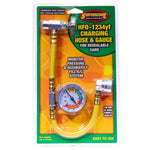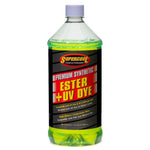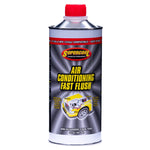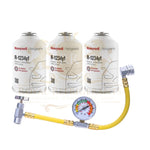You have no items in your shopping cart.
Everything You Need to Know About A/C Refrigerant for Cars and HVAC Applications
Whether you’re driving in the summer heat or relaxing at home with your air conditioner running, one thing keeps you cool — A/C refrigerant. It’s the lifeblood of every cooling system, both in cars and HVAC units.
But what exactly is an A/C refrigerant? How does it work, and what are the different types used today? In this article, we’ll explore everything you need to know about A/C refrigerants — their function, types, maintenance, and the latest eco-friendly trends.
What Is an A/C Refrigerant?
A/C refrigerant is a chemical compound that absorbs heat from inside your car or home and releases it outside, keeping the air cool and comfortable.
In simple terms:
👉 It’s the cooling agent that makes air conditioning possible.
These refrigerants circulate through a closed system of compressors, condensers, and evaporators, continuously changing between liquid and gas states to transfer heat efficiently.
How A/C Refrigerant Works
Here’s the basic cycle followed by every A/C system — whether in your car or HVAC unit:
Compression:
The compressor pressurizes the refrigerant gas, raising its temperature.
Condensation:
The gas moves to the condenser coil, where it releases heat and becomes a liquid.
Expansion:
The expansion valve reduces pressure, cooling the liquid refrigerant.
Evaporation:
The refrigerant evaporates, absorbing heat from the air — and that’s what gives you cool, refreshing air.

Types of A/C Refrigerants Used in Cars
Over the years, different types of refrigerants have been used in automotive A/C systems. Here’s a quick overview:
| Refrigerant Type | Commonly Used In | Notes |
|---|---|---|
| R-12 (Freon-12) | Older cars (pre-1995) | Banned due to ozone depletion |
| R-134a | Most vehicles (1995–2016) | Reliable, but moderate global warming potential |
| R-1234yf | Modern cars (2017–present) | Eco-friendly with low GWP |
| R-744 (CO₂) | Some luxury or electric vehicles | Highly efficient and sustainable |
💡 Pro Tip: Never mix refrigerant types. Always check your vehicle manual or consult a professional technician before recharging.
Types of A/C Refrigerants in HVAC Systems
Like automotive systems, home and industrial HVAC units also use various refrigerants:
| Refrigerant | Application | Status |
|---|---|---|
| R-22 (Freon-22) | Older HVAC systems | Phased out globally |
| R-410A | Modern residential and commercial units | Widely used, ozone-safe |
| R-32 / R-454B | Latest HVAC models | High efficiency, lower GWP |
Signs Your Car May Need a Refrigerant Recharge
If your car’s air conditioning isn’t cooling properly, you may be low on refrigerant. Common symptoms include:
-
Weak or warm airflow from vents
-
Clicking sounds when A/C turns on
-
Visible oily residue near A/C lines
-
Foggy windows or strange odors
If you notice any of these, have your A/C system checked by a qualified technician. Overcharging or using the wrong refrigerant can damage the compressor.
Environmental and Safety Concerns
Older refrigerants like R-12 and R-22 have been phased out because they damage the ozone layer. Even modern refrigerants must be handled responsibly — leaks not only harm the environment but can also pose health risks.
Always:
-
Have leaks repaired by a certified professional.
-
Avoid DIY refills unless you’re trained.
-
Use EPA-approved or environmentally friendly refrigerants whenever possible.
Eco-Friendly Alternatives and the Future of Cooling
The refrigerant industry is shifting toward low-GWP (Global Warming Potential) alternatives:
-
R-1234yf for cars
-
R-32 and R-454B for HVAC
-
Natural refrigerants like CO₂ and hydrocarbons for sustainable systems
These innovations reduce greenhouse emissions while improving cooling efficiency — paving the way for a cleaner, greener future.
Conclusion
A/C refrigerants are essential to modern comfort — from your car’s climate control to your home’s air conditioning. Understanding how they work and choosing the right type ensures better performance, lower costs, and a smaller environmental footprint.
As technology advances, eco-friendly refrigerants are leading the future of cooling — keeping us comfortable while protecting our planet.
 English
English







